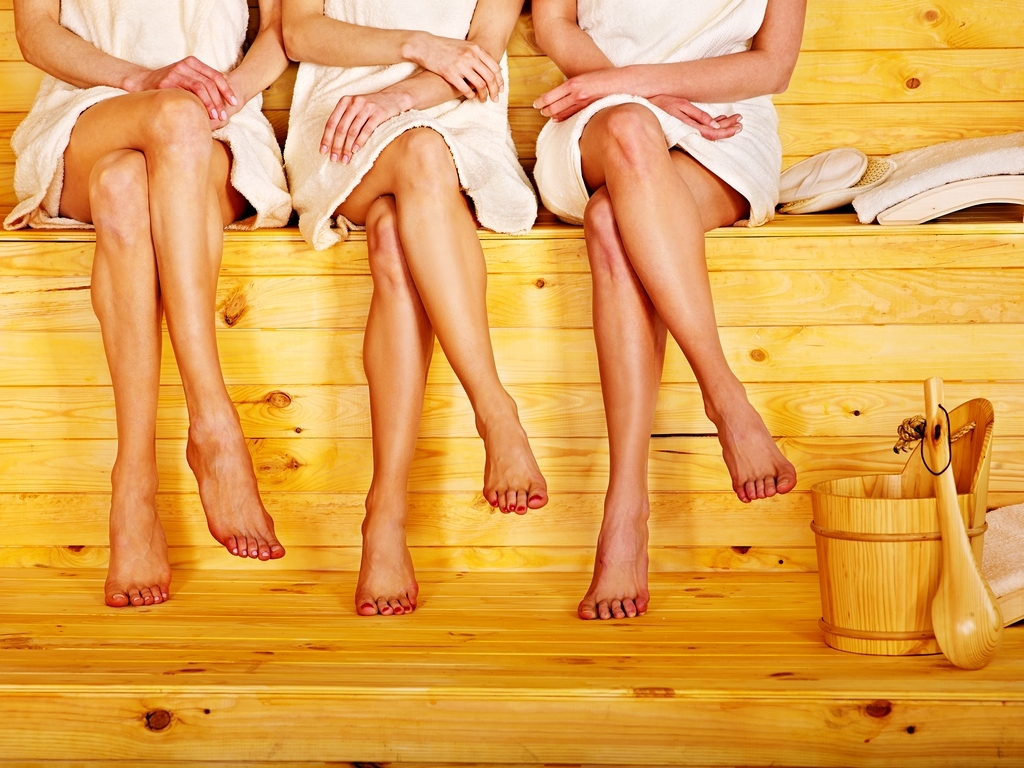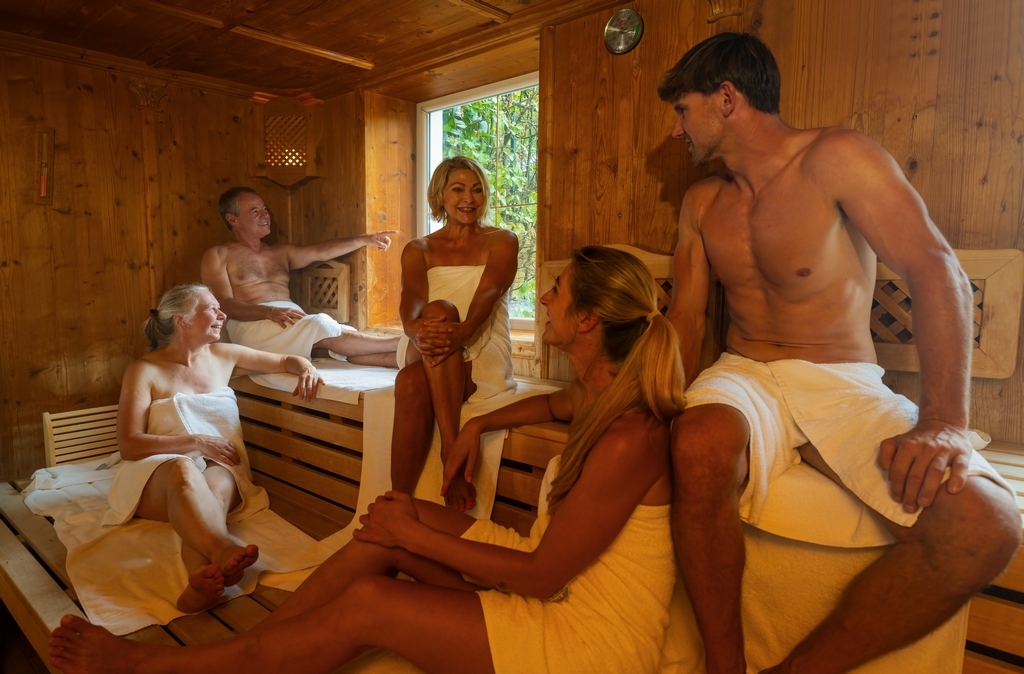The Rise of Social Saunas: A New Era for an Ancient Tradition


Saunas have been an integral part of human culture for thousands of years, with origins tracing back to ancient Finland two millennia ago. As Dave Peterson explains, saunas are catching on throughout much of the modern world, a rise driven by well-documented health benefits combined with aging consumer demographics that have among other trends led to a surge in “social saunas.”
By David J. Peterson
The word “sauna” comes from Finnish meaning the bathing method that involves a repetition of heat, steam and cold, and the dedicated structure (or space) that houses the activity.
Traditionally, Finnish saunas were simple wooden structures, often built near lakes or rivers, allowing bathers to alternate between hot and cold. Today, saunas feature efficient heating systems and contemporary designs that facilitate not only breaking a sweat and relaxation but also socializing in the swelter. Many are also combined with cold plunges or swimming pools to provide the cold side of the traditional process.
In many ways, using saunas is a practice that links the past with the present, and it appeals to users across the globe and a wide range of demographics. Although most associated with Finland, where sauna use remains part of daily life for a majority of the population, numerous other cultures have developed their own versions of heat bathing.
The Romans famously had elaborate bathhouses with heated rooms, the Turks developed the hammam, and the Russians embraced the banya. Indigenous peoples in North America used sweat lodges for purification and spiritual renewal, and the list goes on. Over time, saunas have evolved in design and technology, but their fundamental purpose remains the same: to cleanse the body, rejuvenate the mind, and foster social bonds.
ALL TOGETHER NOW
For some people, using a sauna is a solitary experience, not unlike taking a shower, and there will always be people who are uncomfortable in a state of undress in a group setting. But for many, saunas are also used to bring people together, albeit in a decidedly intimate and private environment. Families, couples, and friends now gather in social saunas for quality time, shared rituals, and relaxation.
According to author and health and wellness “guru” Martin Goldmann, “In recent years, saunas have evolved from quiet wellness retreats into vibrant social spaces, redefining how people connect and relax. This shift is part of a broader trend towards social bathing, where communal wellness experiences are replacing traditional social activities like drinking or dining out. For younger generations, particularly millennials and Gen Z, saunas are now the go-to destination for relaxation, connection, and self-care.”
It’s a trend that extends from small health clubs to five-star resorts, which are all recognizing the appeal of saunas as key wellness amenities that appeal to wide demographics. Luxury hotels now feature panoramic glass saunas with breathtaking views, while mountain lodges offer cozy sauna retreats in nature. And naturally health clubs and fitness centers feature saunas, along with steam baths, cold plunges and hydrotherapy spas as key amenities.
While the physical health benefits of the sauna lifestyle are far reaching, social saunas also play a role in addressing modern issues such as loneliness and mental health. Many wellness centers now incorporate group sauna sessions with breathwork, meditation, and sound therapy to enhance emotional well-being.
Sauna design has come a long way from the rustic log cabins of early Finnish settlers. Modern advancements have introduced a variety of sauna styles and systems. Those common variants include:
- Traditional Wood-Burning Saunas: Using wood stoves and stones to generate heat, these remain a favorite for those who enjoy a more authentic experience.
- Electric Saunas: More common in urban settings, electric heaters offer precise temperature control and require less maintenance.
- Infrared Saunas: Utilizing infrared light to directly heat the body rather than the air, these saunas are popular for their efficiency and therapeutic benefits.
- Mobile and Floating Saunas: Innovations like floating saunas on lakes or mobile saunas on trailers have expanded access to heat therapy in unique and scenic locations.
The integration of lighting, aromatherapy, and digital temperature controls has further enhanced the sauna experience, making it more customizable and immersive.
HEALTHY CHOICES
Scientific research has confirmed the numerous health benefits of regular sauna use with more data becoming available as the use of saunas has driven increased scientific research. The benefits start with the heart. Saunas help lower blood pressure, improve circulation, and reduce the risk of heart disease. Sweating in a sauna helps flush toxins from the body through the skin.
Improved respiratory function is another major benefit as steam and heat can help clear congestion and improve lung function. Heat therapy helps with pain and recovery from workouts, injury and or even surgery. Saunas soothes sore muscles and joints, making saunas popular among athletes.
One of the most fascinating areas of sauna research focuses on longevity. Studies suggest that regular sauna use can reduce the risk of Alzheimer’s and dementia by improving circulation and brain function. They help maintain skin elasticity and hydration, reducing signs of aging and sauna use improves overall metabolic function, promoting longevity.
And finally, there’s mental well-being: Saunas dramatically reduce stress by promoting the release of endorphins and lowering cortisol levels. The pleasant sensations and relaxation associated with sauna use are factors driving the current trend toward social saunas.
CULTURAL SIGNIFICANCE
In many Scandinavian countries, saunas are seen as essential to daily life. While Finland remains the global epicenter of sauna culture, the practice has gained international appeal. In Russia, banyas serve as communal gathering spaces. Japan has embraced sauna culture through sentō and onsen traditions, integrating them into wellness and relaxation practices.
Now, in cities around the world, saunas are transforming into dynamic social hubs. From the lively saunas of Oslo to the avant-garde installations in Tokyo, the experience is no longer just about relaxation but about entertainment, connection, and culture.

With growing interest in wellness tourism and preventive healthcare, saunas are increasingly integrated into public health initiatives and wellness centers.
Hospitals and rehabilitation facilities use infrared saunas to aid physical therapy, while gyms and spas incorporate heat therapy as part of holistic wellness programs.
“The resurgence of social bathing isn’t just a passing trend,” Goldman explains, “it’s a return to ancient traditions. Cultures around the world, from Finnish saunas to Turkish hammams, have long embraced communal bathing as a way to relax and bond. Today, this practice is being reimagined for modern lifestyles, offering a sanctuary from the stresses of daily life.
ADVANCING AESTHETIC DESIGN
Contemporary saunas are as much about design as they are about function. Modern architects are incorporating sleek materials, innovative lighting, and cutting-edge technology to enhance sensory experiences. Saunas are now found in:
- Glass-walled structures that showcase nature’s beauty.
- Underground or cave saunas evoke a primal connection to the earth.
- Floating saunas that combine relaxation with aquatic environments.
Design advancement, awareness of benefits, and the move to social saunas has driven sauna market expansion in recent years. In fact, it’s fair to say that the sauna renaissance is just beginning in the United States, where wellness trends continue to gain traction. Several factors suggest strong growth potential:
With the rise of wellness tourism, more Americans are looking to saunas for their health benefits. The shift away from alcohol-centric socializing aligns with the appeal of sauna gatherings.
As interest in cold plunging and contrast therapy grows, saunas provide the perfect complement.
According to a report issued by the Global Wellness Sumit, “Where saunas were once sad, dark, lonely boxes in basements, today they’re lively, social, cultural hubs with fantastic views and incredible locations, and consumers can’t get enough. The social sauna is just one aspect of our ‘Sauna Reimagined’ trend, which looks in depth at the many ways that the sauna movement is growing around the world.”
SAUNA CULTURE IN NEW YORK
“Traditionally, the sauna experience in the U.S. was seen as a solitary escape or a luxurious treat, often requiring hours set aside and framed as an act of self-care or even self-indulgence. Yet, as the science supporting regular sauna practice grows, a new model is taking shape: the social sauna as a vibrant, communal, and productive space,” says Sheba Jafari, co-founder of The Altar.
The Altar is a health club set to open in New York’s Flatiron District. With a 50-person sauna, both guided and unguided communal sessions, and additional health optimization modalities-such as vitamin IV drips, red light therapy, hyperbaric chambers, compression, and peptide therapies, The Altar embodies the idea that health can be a cultural gathering place.
Henrique Castro, co-founder of The Altar, adds, “Here, sauna sessions are reframed as 75-minute communal classes, inviting members to participate in a practice that blends the pleasures of social connection with the proven benefits of hot and cold therapy. Much like boutique fitness studios changed how Americans approach exercise, we also are aiming to make regular sauna practice accessible, productive, and socially engaging.”
Set in the heart of New York City’s “wellness corridor,” The Altar is focused on the practice of “sweating together”, not just as a means of relaxation, but as a cornerstone of community. As the social sauna movement continues to gain momentum, spaces like The Altar are poised to make bathing a fixture of everyday life.
THE GOLDEN EGG
One of the more interesting design iterations of the social sauna was developed back in 2017. Swedish architectural firm Bigert & Bergstrom unveiled the “Solar Egg,” a gold-plated 16-foot-tall wood-and-steel sauna designed for up to eight people.
The wood-burning sauna was part of a community redevelopment project led by Swedish developer Riksbyggen in the nation’s northernmost city of Kiruna. Equal parts sauna and environmental artwork, the Solar Egg’s exterior — made from a special stainless gold-mirror alloy — reflects the surrounding environment while making a distinct visual statement in the Nordic landscape.
The Solar Egg was designed as a “social sculpture” where local residents and visitors can meet and discuss these challenges while also celebrating the region’s cultural attachment to the sauna experience.
According to the architects, the egg breaks up the surrounding into different mirror images: “Landscape, mine, town, sky, sun and snow are here combined into a fragmented image that can evoke associations with the complexity spanned by today’s discussion about climate and sustainable community development.”
PART OF A BIGGER PICTURE
Developers and designers are incorporating saunas into luxury real estate, fitness centers, and boutique hotels. Cities like New York, Los Angeles, and Chicago have already seen a surge in social sauna pop-ups and wellness clubs, and the trend is likely to expand across the country.
All of this points to a revolution in cultural wellness experiences. With growing awareness of their health benefits, rising demand for wellness spaces, and an increasing desire for meaningful social experiences, the sauna market in America is poised for significant expansion. As more people seek alternatives to digital distractions and alcohol-based socializing, the modern sauna stands as a beacon of warmth, well-being, and human connection.
Whether through high-tech wellness integrations, or stunning architectural designs, today’s saunas are redefining how people relax and connect.
The current social sauna renaissance is likely much more than a passing trend. The more people realize the spectrum of benefits and pleasures, it may well become a lifestyle shift that is here to stay.
David J. Peterson, P.E., IWI, is co-founder of Watershape University and president of Watershape Consulting, Inc.
References:
“The Social Side of Sauna Bathing”: Why Connection Matters for Wellness,” Sauna House
“Trend: Saunas and Social Connection,” Global Wellness Summit
“Are Saunas the New Social Hubs?” Sauna from Finland
“The Influence of Socioeconomic and Psychological Factors on the Popularity of Sauna Treatment Among Female University Students,” Podstawski, R., Honkanen, A., Tuohino, A., & Gizinska, R.
Image credits: Opening photo by poznyakov | Shutterstock; group sauna image, R. Classon | Shutterstock; sauna interior renderings courtesy of Watershape Consulting; solar egg image by Sebow | Shutterstock.












